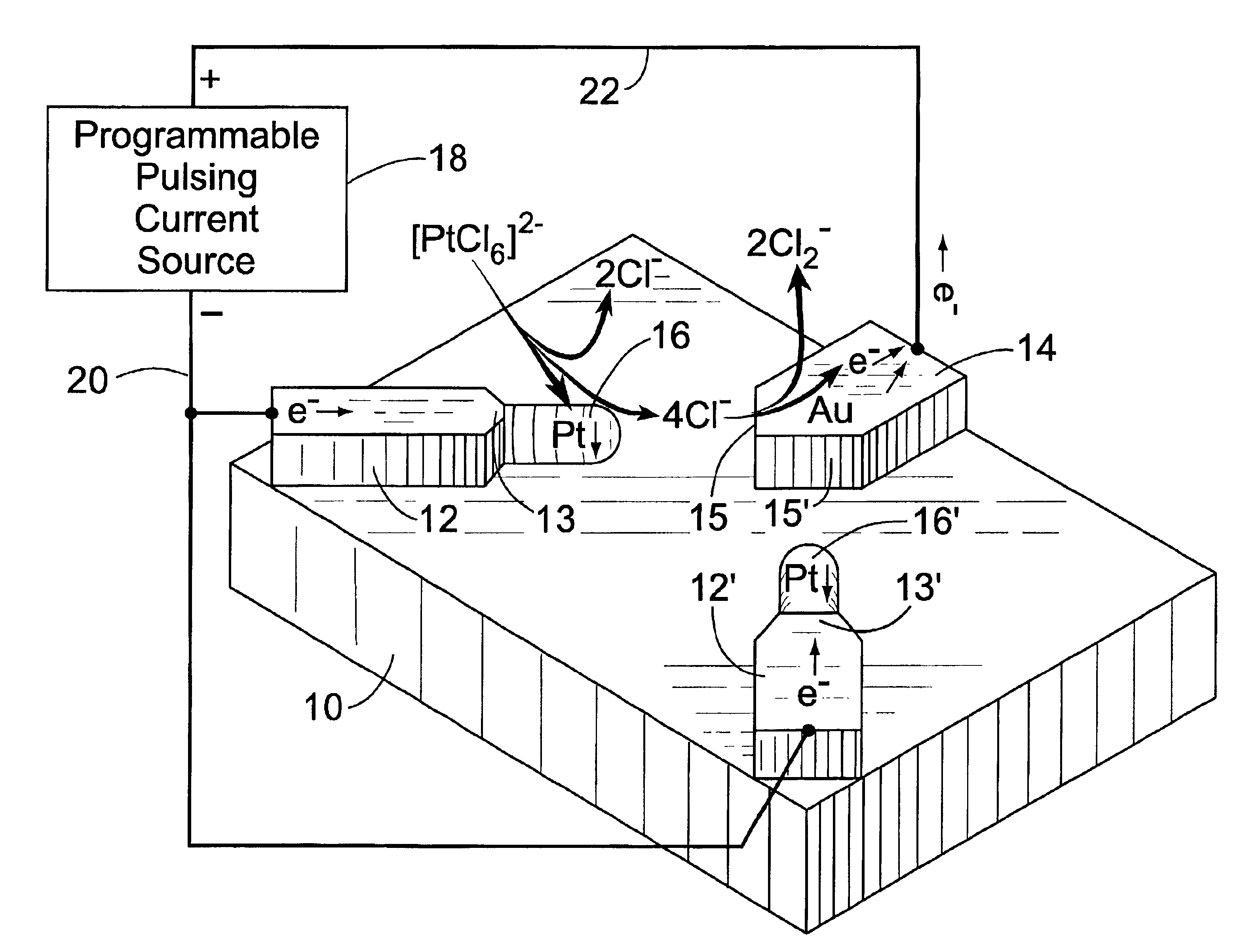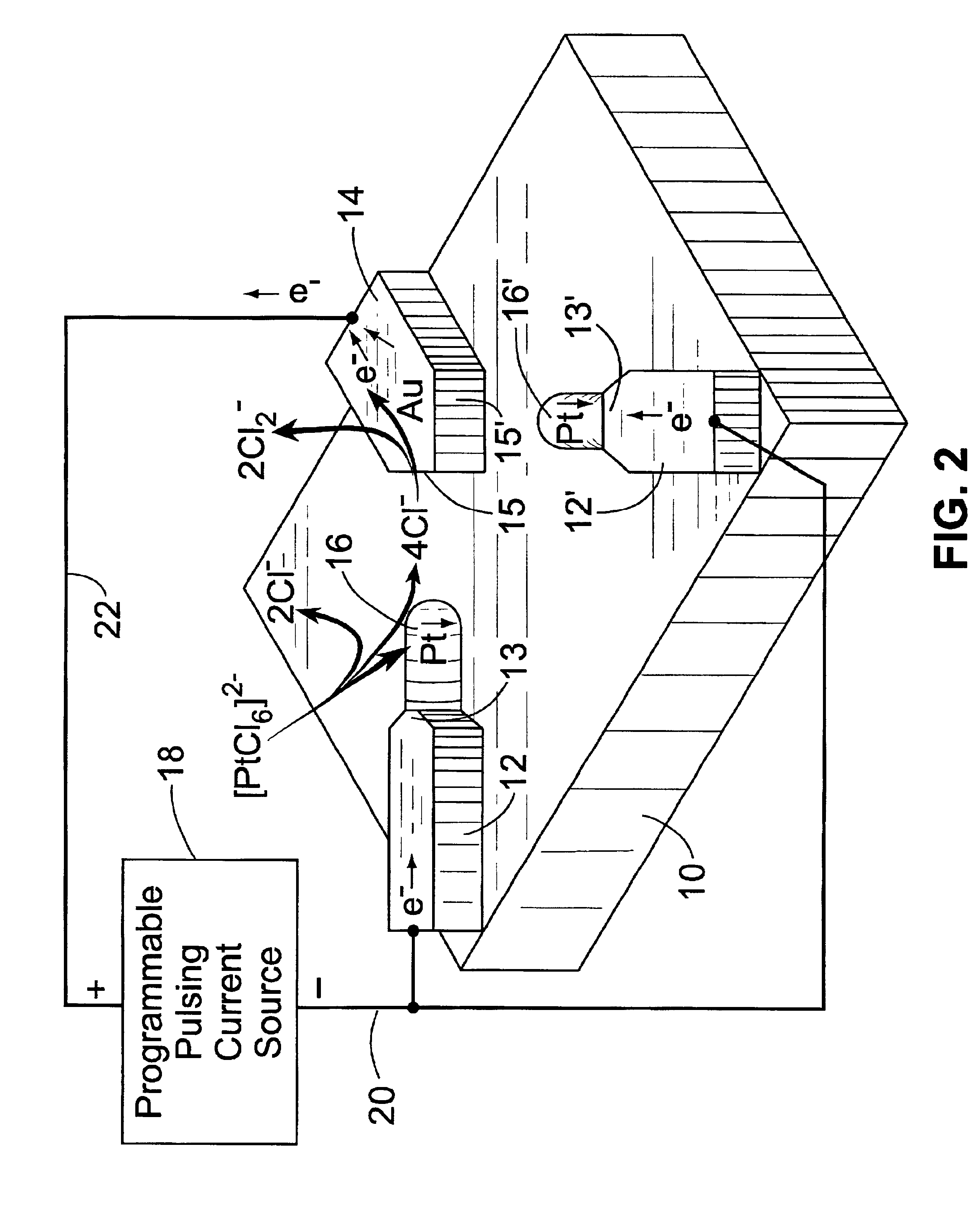Catalyst-induced growth of carbon nanotubes on tips of cantilevers and nanowires
a carbon nanotube and nanowire technology, applied in the direction of surface reaction electrolytic coating, chemical vapor deposition coating, cell, etc., can solve the problems of difficult adjustment of the length of the nanotube tip, poor electrical properties of carbon nanofibers, and high mechanical strength of nanotubes, so as to enhance the adhesion of the catalyst dot to the substrate and enhance the adhesion of the ni to the substrate
- Summary
- Abstract
- Description
- Claims
- Application Information
AI Technical Summary
Benefits of technology
Problems solved by technology
Method used
Image
Examples
example ii
Arrays of single carbon nanostructures were successfully grown directly on commercial SiN contact-mode AFM cantilevers utilizing the two-step process described above.
Carbon Nanostructure Growth on Flattened Tips
As described above, the catalyst dot 33 can be deposited onto very sharp tip 45, which is preferably pointing directly downward, as shown in FIG. 4, to achieve downward carbon nanostructure growth. Upward carbon nanostructure growth is best achieved with a slightly different technique, using a flat tip 83, as shown in FIGS. 8a, 8b. If a sharp tip 45 is inverted (with the tip pointing upwardly) during the heating process for nanostructure growth, the catalyst dot 33 may have a tendency slide down the side of the cantilever 31, resulting in carbon nanostructure growth in a lateral direction. Even slight displacement of the dot 33 can produce undesirable results. As shown in FIGS. 8a, 8b, a catalyst dot 33 on a flat tip 83 is unlikely to slide down the side of an inverted cantil...
PUM
| Property | Measurement | Unit |
|---|---|---|
| diameters | aaaaa | aaaaa |
| temperatures | aaaaa | aaaaa |
| diameter | aaaaa | aaaaa |
Abstract
Description
Claims
Application Information
 Login to View More
Login to View More - R&D
- Intellectual Property
- Life Sciences
- Materials
- Tech Scout
- Unparalleled Data Quality
- Higher Quality Content
- 60% Fewer Hallucinations
Browse by: Latest US Patents, China's latest patents, Technical Efficacy Thesaurus, Application Domain, Technology Topic, Popular Technical Reports.
© 2025 PatSnap. All rights reserved.Legal|Privacy policy|Modern Slavery Act Transparency Statement|Sitemap|About US| Contact US: help@patsnap.com



